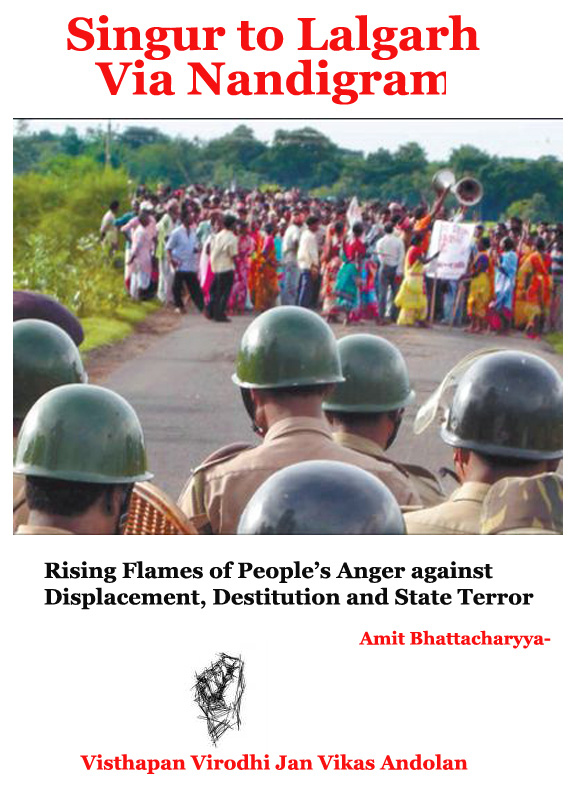26000 securirty men and Gunship Helicpters to Curb Maoist party
Posted by Admin on August 7, 2009

Maoists at a memorial for those killed in police encounters in the Nallamalla forest, south of Hyderabad.
NEW DELHI: Security forces are preparing for a long haul in the counter-Naxalite grid, with a good 26,000 personnel drawn from CRPF, BSF, ITBP and Nagaland armed battalion joining hands to “liberate” Maoist strongholds over the next couple of years.
The upcoming offensive against the Maoists, timed for a launch sometime in October, will see additional deployment of nearly 16 battalions of CRPF, five of BSF, one of ITBP and two Naga battalions, to carry out surgical, intelligence-based strikes on their hideouts in strongholds like Abujmarh and Malkangiri.
The forces will be pulled out from J&K and the North-East, with some troops being disengaged from the international border as well.
The possibility of involving the Army at some point during the offensive is not ruled out either. Rashtriya Rifles, which is currently manning the counter-insurgency grid in Jammu & Kashmir, may be engaged as and when required. Any immediate move to involve the Army is, however, unlikely as the agencies feel that its presence would be required more at the border, J&K and the North-East in the wake of Central forces being pulled out from there.
The operational strategies for the anti-Maoist offensive are being finalised and will be fine-tuned in consultation with the seven Naxal-hit states at the upcoming chief ministers’ meet on internal security on August 17.
A separate session in the evening will be devoted to Naxal management, with the Centre enlisting the cooperation and participation of the police of the Naxal-hit states in the proposed counter-operation. “The police will not only be part of the operations, but will also need to set up new police stations,” an MHA official pointed out.
The plan is to carry out operations based on pinpointed intelligence regarding Maoist hideouts and camps. Armed with clear GIS maps, the security forces and state police will liberate Naxalite-infested areas and hold them until administration is brought in.
“It’s a long-term strategy…the forces will have to stay deployed for at least the next two years,” said a senior home ministry official.
The offensive will be massive in magnitude and will also involve air support for reconnaissance, besides evacuation and movement of the forces. It will also see a technical and equipment upgrade with more mine-proof vehicles, better bullet-proof cars and mine detectors being placed at the forces’ disposal.
The discussions at the upcoming interaction between the Prime Minister and chief ministers of the Naxal-hit states will essentially focus on operational matters, including whether the strategy should focus on pincer operations or pushing the Naxalites in.
The operational strategies may evolve as the offensive progresses, with the options being whether to first hit at strongholds like Abujmarh and Malkangiri or to reclaim smaller pockets of Naxalites’ influence like Lalgarh in West Bengal.

























Leave a comment